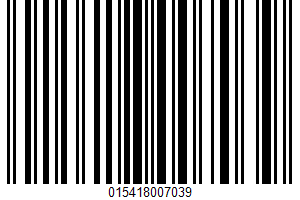Himalayan Gourmet Pink Salt - calories
Manufacturer Rouse's Enterprises, Inc.
Product Information and Ingredients
Himalayan Gourmet Pink Salt is manufactured by Rouse's Enterprises, Inc. with a suggested serving size of 1 tsp (8 g) and calories per serving. The nutritional value of a suggested serving of himalayan gourmet pink salt includes 0 mg of cholesterol, 0 mg of sodium, 0 grams of carbohydrates, 0 grams of dietary fiber, 0 grams of sugar and 0 grams of proteins.
The product's manufacturer code is UPC: 015418007039.
This product is high in sodium.
Himalayan Gourmet Pink Salt is a low fat food because it contains less than 3 grams of fat per suggested serving.
Sodium 10% of DV
A serving of 1 tsp (8 g) of himalayan gourmet pink salt has 10% of the recommended daily intake of sodium.
Ingredient List
- Pink Salt Crystals

Nutrition Facts
Serving Size 1 tsp (8 g)
| Amount Per Serving | ||
|---|---|---|
| Calories | Calories from Fat 0 | |
| % Daily Value* | ||
| Total Fat 0g | 0% | |
| Saturated Fat 0g | 0% | |
| Trans Fat 0g | ||
| Cholesterol 0mg | 0% | |
| Sodium 0mg | 0% | |
| Total Carbohydrate 0g | 0% | |
| Dietary Fiber 0g | 0% | |
| Sugars 0g | ||
| Protein 0g | ||
| Vitamin A 0% | Vitamin C 0% |
| Calcium 0% | Iron 0% |
* Percent Daily Values are based on a 2,000 calorie diet.
Nutrition Facts
Serving Size 100g (about 3.52 oz)
| Amount Per Serving | ||
|---|---|---|
| Calories | Calories from Fat 0 | |
| % Daily Value* | ||
| Total Fat 0g | 0% | |
| Saturated Fat 0g | 0% | |
| Trans Fat 0g | ||
| Cholesterol 0mg | 0% | |
| Sodium 38125mg | 127% | |
| Total Carbohydrate 0g | 0% | |
| Dietary Fiber 0g | 0% | |
| Sugars 0g | ||
| Protein 0g | ||
| Vitamin A 0% | Vitamin C 0% |
| Calcium 0% | Iron 0% |
* Percent Daily Values are based on a 2,000 calorie diet.
Himalayan Gourmet Pink Salt Nutritional Value
| Nutrient | Suggested Serving 1 tsp (8 g) | Standard Serving 100g |
|---|---|---|
| Sodium, Na | 3050 mg (10%) | 38125 mg (127%) |
Footnotes
Percent daily values are based on a 2,000 calorie reference diet. Factors like age, gender and level of physical activity may affect your daily required values.
The editorial opinions regarding food value or quality in this website are given without warranty, and are not intended to replace medical advice or a nutritionist guidance.
Dietary Recommendations
A healthy eating pattern that accounts for all foods and beverages within an appropriate calorie level could help achieve and maintain a healthy weight and reduce the risk of chronic disease. Healthy eating habits include the following:
- Vegetables from all subgroups, including dark, green, red and orange vegetables and also beans and peas
- A variety of whole fruits
- Grains with at least half of which are whole grains
- Low or fat free dairy products, including milk, yogurt, cheese and/or fortified soy beverages
- Protein foods, including seafood, lean meats and poultry, eggs and nuts
- Oils with limited amounts of saturated fats and trans fats, added sugars, and sodium
